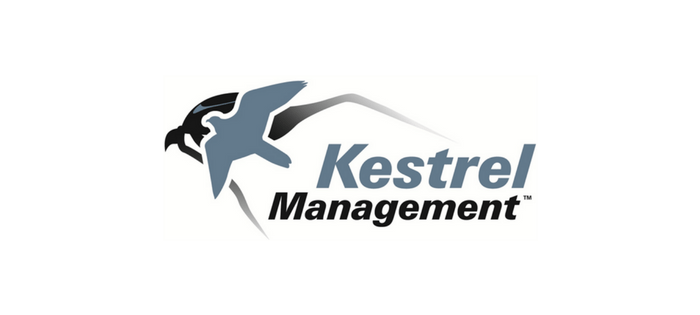
Comments: No Comments
Improving Process Safety Leadership and Culture
Over the past 30 years, there have been numerous events both nationally and internationally that have led organizations to bring a more concerted focus to process safety. Such a focus has many such organizations building process safety elements into their management systems. The goal is to not only comply with regulations, such as OSHA 1910.119, but to also ensure sustainable programs that prevent process safety incidents from ever happening.
A large part of this effort involves integrating process safety leadership into existing programs. Improving an organization’s process safety leadership and culture can have significant and lasting impacts on a company’s process safety performance. Three steps that organizations can undertake to advance this effort include the following:
- Amending metrics to include more leading indicators that are designed to prevent process safety incidents
- Cultivating communications geared toward process safety
- Ensuring incentive schemes include measures related to process safety
Traditional Management Systems
Traditional management systems include personal safety, environmental management, and industrial hygiene as the core elements. Management systems, metrics, and communications have historically been focused on personal safety and environmental management. These areas have clear industry compliance drivers and easy-to-understand metrics for organizational leaders. The prevention of personal injury or actions to protect the environment are relatable concepts for most.
The addition of process safety to the management system structure has been a smooth transition for many organizations, as the majority of the elements that cover process safety are already part of a typical management system. However, process safety—and the incidents that can occur if not managed well—can be complex in nature to explain. The challenging part of integrating process safety into an organization becomes getting leaders both comfortable and equipped to address it.
Leading Metrics
Due to the generally low frequency of process safety incidents, the development and measurement of process safety indicators is often not a priority for organizations. Many companies rely heavily on lagging personal safety and environmental metrics (Days Away from Work Rate, Total Recordable Incident Rate, Spill Rate). Injuries are easy for leaders to understand and explain. Leaders demonstrate empathy towards their staff and contractors, again making it easier for them to relate to personal safety. Minor spills are also easily understood and easier to discuss.
While these lagging metrics are still important and can be used and communicated, organizations need to include different metrics to bring more focus on leading indicators that are designed to prevent process safety incidents. Some examples of leading metrics that can be developed, implemented, and tracked include the following:
- Identifying systems/equipment that are critical to prevent or mitigate a process safety event, and tracking their effectiveness and operability
- Tracking the completion of Management of Change (MOC)
- Tracking the effective closeout of Process Hazard Analysis (PHA) and PSM audit actions
- Assessing organizational capability around process safety and tracking identified gap closure plans
- Tracking the number of Pressure Relief Valve (PRV) activations
- Tracking anomalies from complete permit-to-work reviews
Communication
Once an organization has developed a set of leading process metrics applicable to the business, the metrics should be made visible to all staff and included in communications on business performance. Leaders also need to focus more of their strategic communications and site visits on process safety. This can include talking about leading process safety metrics and undertaking the following activities when at a facility:
- Ask members of the facility staff about the major identified hazards from the PHA
- Determine if staff are involved in reviewing and updating operating procedures
- Ask staff about the last emergency drill and actions taken
- Ask operations staff about the number of alarms they deal with on a typical shift to determine if alarm management/rationalization is required or if low criticality alarms are not burdening staff
- Hold discussion groups focused on process safety during leadership onsite visits
Incentive Schemes
Another outcome of tracking lagging metrics involves translating them into part of the organization’s incentive bonus criteria for leaders. Organizations should work to transition leadership bonus/incentive schemes away from just traditional personal safety and environmental lagging metrics, namely injury and spill rates. Again, it would not be necessary to immediately drop existing lagging metrics. Start with adding the new metrics and gradually change the percentage weightings so leading process safety indicators become the dominant factor. This will serve to reinforce the importance of process safety and incident prevention in overall business performance.
To truly have an organization that demonstrates process safety leadership and has a strong process safety culture, there need to be some changes and effective actions taken. The steps outlined in this article—amending metrics, cultivating communications toward process safety, and integrating process safety into incentive schemes—can help organizations take a few of the initial necessary steps to build process safety culture and leadership and, ultimately, prevent process safety incidents from occurring.

Kestrel Grows Senior Food Safety Resources
 Kestrel is pleased to be growing our resources to the food industry with the addition of Senior Consultant Roberto Bellavia.
Kestrel is pleased to be growing our resources to the food industry with the addition of Senior Consultant Roberto Bellavia.
Roberto comes to Kestrel following a successful career with US Foods, where he provided leadership for quality and food safety programs; managed and developed HACCP, GMP, SSOP, and SOP programs; and planned and implemented GFSI certification for FSSC 22000 at 13 national locations.
At Kestrel, Roberto will be serving as project manager for food safety-related projects and supporting clients in developing and implementing GFSI schemes and supplier approval programs. He will focus on meat, dairy, RTE, bakery, and other related food industry segments.
Roberto holds a number of food qualifications that will enhance Kestrel’s ability to serve the food industry, including GFSI, HACCP, GMP, SSOP, SOP, FSPCA, Lead Auditor certifications. He has nearly 20 years of food quality experience and a Master’s Degree in Animal Production Science from the University of Camerino in Italy.

Comments: No Comments
Process Safety and Human Performance Reliability
On August 6, 2012, the release of flammable vapor led to a fire at the Chevron Refinery in Richmond, California. That event generated significant public concern about refinery safety and emergency response in California. It also eventually prompted California’s Department of Industrial Relations (DIR) to develop a draft regulatory proposal for a new Cal/OSHA Process Safety Management (PSM) standard that strengthens regulatory oversight, policy, and enforcement. The PSM for petroleum refineries notice hit the California Register on Friday, July 15, 2016.
But California refineries are not alone. Federal changes are on the way, as well, as OSHA considers revisions to its PSM standard.
Proposed Cal/OSHA Process Safety Management (PSM) Standard Changes
As a recap, the proposed Cal/OSHA PSM changes modify existing PSM language and introduce a number of new management system elements and other requirements. These amendments require California refineries to commit to the following:
- Use the Hierarchy of Hazard Controls to choose safer, more enduring technologies that address safety concerns and help to eliminate or minimize hazards in refinery processes.
- Perform damage mechanism reviews to assess physical degradation, such as corrosion and mechanical wear, and to determine recommended corrective actions.
- Conduct safeguard protection analysis to ensure that safeguards will help prevent initiating events from turning into major catastrophes.
- Implement corrective actions with clear and enforceable deadlines and consequences for inaction to ensure that safety program improvements are carried out.
- Implement appropriate Management of Change (MOC) activities so safety is factored into changes to operations, maintenance procedures, personnel, etc., all of which can undermine plant safety.
- Perform periodic safety culture assessments to evaluate management’s and employees’ attitudes, perceptions, and values as they pertain to safety.
- Account for human factors (e.g., training and competency levels, fatigue, experience, communication, physical challenges), which can greatly influence accidents and incidents in the workplace.
- Conduct root cause analysis to identify underlying causes of the incident and recommended corrective actions to help prevent recurrence.
- Engage employees at all levels in all elements of the PSM program, including working to prevent accidents and incidents through the means described above.
The Human Element of PSM
Employee and contractor performance is a significant source of risk within any organization. The majority of accidents and other unintended events are—at least in part—the result of human error. It is not surprising that Cal/OSHA’s proposed PSM regulations and potential Federal PSM changes recognize the importance of the “human element” in a number of the changes—from performing safety culture assessments to account for human factors, to engaging employees.
Many companies struggle with the following challenges as they work to establish and/or improve elements of their PSM programs:
- How do we identify factors contributing to incidents?
- What are appropriate recommendations that will drive improvements?
- How should we include human factors in Process Hazard Analyses (PHAs)?
- How can we improve our safety culture?
Often, these elements are treated independently, but this overlooks the important relationship between them. For example, any unintended event (e.g., an LOPS, process upset, safety incident) is the result of multiple contributing factors, not a single event. Focusing on these contributing factors enables companies to develop a deeper understanding of why incidents are occurring. Linking contributing factors to specific barriers further allow companies to identify weaknesses in their processes and procedures and to develop appropriate recommendations to drive improvements. Conducting contributing factor analyses also enables the company to identify specific human factors to be used in their PHAs.
Human Performance Reliability (HPR) Approach
Kestrel’s Human Performance Reliability (HPR) approach provides an integrated solution for addressing new PSM requirements. Unlike a typical root cause analysis, which addresses factors leading to a specific incident, HPR is based on a sophisticated statistical analysis of human factor data obtained from multiple incidents. This allows companies to identify and access broader—and potentially systemic—issues that are affecting the safety performance of the organization.
HPR consists of three elements:
- Incident Investigation and Analysis (IIA) – IIA adopts the framework provided by the Human Factors Analysis and Classification System (HFACS) to classify human error and other contributing factors—but with the additional step of associating the control(s) that failed to prevent the incident from occurring. Statistical analyses help to identify patterns in the data to pinpoint the human errors and controls that are appearing most frequently.
- Procedure Improvements – Although the IIA process will identify where improvements are needed (i.e., which controls are associated with incidents), it will not result in improved safety performance—not without completing associated improvement projects. Only by scoping and implementing those improvement projects will companies realize improved safety performance.
- Safety Culture Assessment – Learning organizations actively seek the underlying causes of incidents and use data to make performance improvements. These organizations typically have robust systems to ensure that the traits that represent a strong safety culture are in place, mature, and fully integrated into standard practices
While the individual elements can be very helpful to a company, deploying them in tandem provides the richest and most comprehensive benefit to overall safety performance. That is because the three components are inherently complementary; each improves the effectiveness of the others.
Systemic Improvements
This process provides immediate value when applied to the investigation of an individual event by identifying additional factors that may have been missed following a traditional root cause analysis approach. It is most powerful, however, when data from multiple events are aggregated. The results of multiple investigations yield a pattern of human factor indicators that can be used to uncover system opportunities for PSM and operational enhancements and overall improved reliability.

Comments: No Comments
California PSM Standards: Targeting Refinery Safety
On August 6, 2012, a release of flammable vapor led to a fire at the Chevron Refinery in Richmond, California. That event generated significant public concern about refinery safety and emergency response in California. It also prompted the California Governor’s report, “Improving Public and Worker Safety at Oil Refineries,” the formation of the Interagency Refinery Task Force (IRTF), and, eventually, the proposed regulatory changes to specifically target refinery safety.
Proposed Cal/OSHA Process Safety Management (PSM) Standard Changes
As most California refineries are aware, California’s Department of Industrial Relations (DIR) developed a draft regulatory proposal for a new Cal/OSHA Process Safety Management (PSM) standard to strengthen regulatory oversight, policy, and enforcement. The PSM for petroleum refineries notice hit the California Register on Friday, July 15, 2016—and Federal changes are on the way, as well, as OSHA considers revisions to its PSM standard.
As a recap, the proposed Cal/OSHA PSM changes modify existing PSM language and introduce a number of new management system elements and other requirements. These amendments require California refineries to commit to the following:
- Use the Hierarchy of Hazard Controls to choose safer, more enduring technologies that address safety concerns and help to eliminate or minimize hazards in refinery processes.
- Perform damage mechanism reviews to assess physical degradation, such as corrosion and mechanical wear, and to determine recommended corrective actions.
- Conduct safeguard protection analysis to ensure that safeguards will help prevent initiating events from turning into major catastrophes.
- Implement corrective actions with clear and enforceable deadlines and consequences for inaction to ensure that safety program improvements are carried out.
- Implement appropriate Management of Change (MOC) activities so safety is factored into changes to operations, maintenance procedures, personnel, etc., all of which can undermine plant safety.
- Perform periodic safety culture assessments to evaluate management’s and employees’ attitudes, perceptions, and values as they pertain to safety.
- Account for human factors (e.g., training and competency levels, fatigue, experience, communication, physical challenges), which can greatly influence accidents and incidents in the workplace.
- Conduct root cause analysis to identify underlying causes of the incident and recommended corrective actions to help prevent recurrence.
- Engage employees at all levels in all elements of the PSM program, including working to prevent accidents and incidents through the means described above.
The Human Element of PSM
Employee and contractor performance is a significant source of risk within any organization. The majority of accidents and other unintended events are—at least in part—the result of human error. It is not surprising that Cal/OSHA’s proposed PSM regulations recognize the importance of the “human element” in a number of the proposed changes—from performing safety culture assessments, to account for human factors, to engaging employees.
Kestrel works with many refining and petrochemical companies that are in the process of establishing and/or improving elements of their PSM programs. Over the years, we have seen many of our clients struggle with the following challenges:
- How do we identify factors contributing to incidents?
- What are appropriate recommendations that will drive improvements?
- How should we include human factors in Process Hazard Analyses (PHAs)?
- How can we improve our safety culture?
Often, these elements are treated independently, but we have found that this overlooks the important relationship between them. For example, any unintended event (e.g., an LOPS, process upset, safety incident) is the result of multiple contributing factors, not a single event. Focusing on these contributing factors enables companies to develop a deeper understanding of why incidents are occurring. Linking contributing factors to specific barriers further allow companies to identify weaknesses in their procedures and processes and to develop appropriate recommendations to drive improvements. Conducting contributing factor analyses also enables the company to identify specific human factors to be used in their PHAs.
Human Performance Reliability (HPR) Approach
Kestrel’s Human Performance Reliability (HPR) approach provides an integrated solution for addressing the new PSM requirements, as outlined above. Unlike a typical root cause analysis, which addresses factors leading to a specific incident, HPR is based on a sophisticated statistical analysis of human factor data obtained from multiple incidents. This allows companies to identify and access broader—and potentially systemic—issues that are affecting the safety performance of the organization.
HPR consists of three elements:
- Incident Investigation and Analysis (IIA) – IIA adopts the framework provided by the Human Factors Analysis and Classification System (HFACS) to classify human error and other contributing factors—but with the additional step of associating the control(s) that failed to prevent the incident from occurring. Statistical analyses help to identify patterns in the data to pinpoint the human errors and controls that are appearing most frequently.
- Procedure Improvements – Although the IIA process will identify where improvements are needed (i.e., which controls are associated with incidents), it will not result in performance improvements—not without completing associated improvement projects. As part of our HPR services, Kestrel works with clients to scope and implement those improvement projects that will lead to improved safety performance.
- Safety Culture Assessment – Learning organizations actively seek the underlying causes of incidents and use data to make performance improvements. These organizations typically have robust systems to ensure that the traits that represent a strong safety culture are in place, mature, and fully integrated into standard practices.
While the individual elements can be very helpful to a company, deploying them in tandem provides the richest and most comprehensive benefit to overall safety performance. That is because the three components are inherently complementary; each improves the effectiveness of the others.
Systemic Improvements
The HPR process provides immediate value when applied to the investigation of an individual event by identifying additional factors that may have been missed following a traditional root cause analysis approach. It is most powerful, however, when data from multiple events are aggregated. The results of multiple investigations yield a pattern of human factor indicators that can be used to uncover system opportunities for PSM and operational enhancements and overall improved reliability.
Experienced Professionals
Kestrel has experienced PSM and HPR professionals on our team, who have successfully developed programs, completed deployments, and conducted training in the refining and petrochemical industries. As California refineries prepare for significant PSM regulatory changes, we would welcome the opportunity to discuss how we can help you manage your PSM requirements and improve your overall safety performance.

Comments: No Comments
Reducing Human Error in Process Safety Short Course
Human error is a significant source of risk within any organization. Management uses a variety of operational controls and barriers, including policies, procedures, work instructions, employee selection and training, auditing, etc., to reduce the likelihood of human error. Accidents occur when there is a failure in one or more of these controls and/or barriers.
Many companies are working to reduce their incident rates by integrating a more detailed analysis of human factors into their incident investigation procedures. In doing so, companies can identify weaknesses in their operational controls at a specific job site, within an operating region, and across the organization.
Reducing Human Error in Process Safety
Join Kestrel and Texas A&M’s Mary Kay O’Connor Process Safety Center this summer for a continuing education short course that provides an opportunity for companies to learn more about integrating human factor data into incident investigations and identifying those operational controls that need improvement.
Reducing Human Error in Process Safety
July 7, 2016
Instructors: A.W. Armstrong and Will Brokaw, Kestrel Management
Location: Phoenix Contact Customer Technology Center
Houston, TX
Credit: 0.7 CEUs/7 PDHs
Register online
What You’ll Learn
This course will outline a process that companies can use to integrate human factor data into incident investigations and identify operational controls that need improvement. Attendees will also get a general overview of human factors and strategies for reducing error in operations.
Who Should Attend
Process safety management coordinators, risk management planning coordinators, and new health, safety, and environment auditors.

Kestrel Tellevate News / Safety
Comments: No Comments
Kestrel to Present at the AFPM Annual Meeting
Join Kestrel at the AFPM Annual Meeting to hear William Brokaw present his paper, Using a Data-Driven Method of Accident Analysis: A Case Study of the Human Performance Reliability (HPR) Process.
AFPM 2016 Annual Meeting
March 13-15, 2016
Kestrel Presentation: March 14 at 3:30 p.m.
Hilton San Francisco Union Square
San Francisco, CA
The Role of Human Error in Occupational Incidents
The concept of human error and its contribution to occupational accidents and incidents have received considerable research attention in recent years. When an accident/incident occurs, investigation and analysis of the human error that led to the incident often reveals vulnerabilities in an organization’s management system.
This recent emphasis on human error has resulted in an expansion of knowledge related to human error and the most common factors contributing to incidents. Kestrel’s Human Performance Reliability (HPR) process helps to classify human error—with the additional step of associating the control(s) that failed to prevent the incident from occurring. This process allows organizations to identify how and where to focus resources to drive safety performance improvements.
In this presentation, Will describes Kestrel’s method for identifying the most frequent human errors and most problematic controls and presents a case study wherein HPR was applied to a large petroleum refining company.
Catch Up with Kestrel
In addition to the presentation on March 14, Kestrel’s experts will also be on hand throughout the Annual Meeting to talk with you. We welcome the opportunity to learn more about your needs and to discuss how we help our chemical and oil & gas clients manage environmental, safety, and quality risks; improve safety performance, and achieve regulatory compliance assurance

